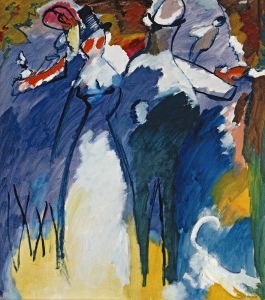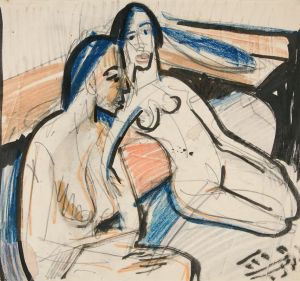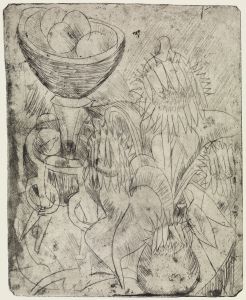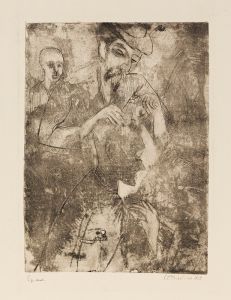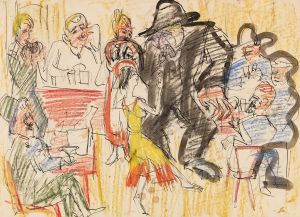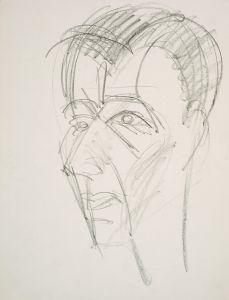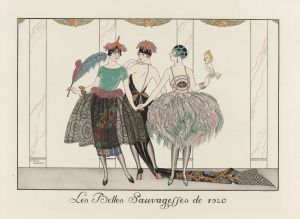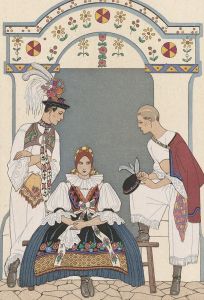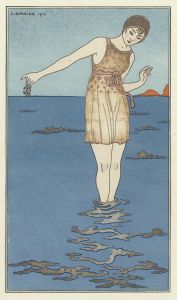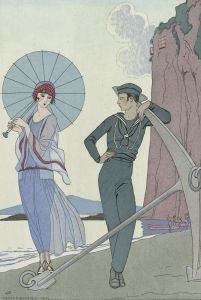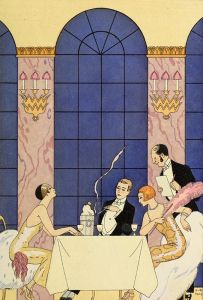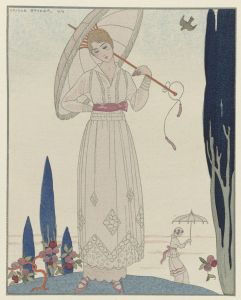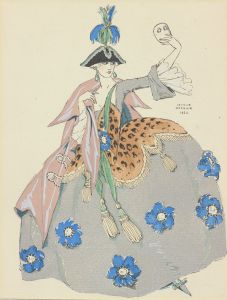
Falbalas et fanfreluches, La Colère
A hand-painted replica of George Barbier’s masterpiece Falbalas et fanfreluches, La Colère, meticulously crafted by professional artists to capture the true essence of the original. Each piece is created with museum-quality canvas and rare mineral pigments, carefully painted by experienced artists with delicate brushstrokes and rich, layered colors to perfectly recreate the texture of the original artwork. Unlike machine-printed reproductions, this hand-painted version brings the painting to life, infused with the artist’s emotions and skill in every stroke. Whether for personal collection or home decoration, it instantly elevates the artistic atmosphere of any space.
Falbalas et fanfreluches, La Colère is an artwork created by the renowned French illustrator and painter George Barbier. George Barbier, born in Nantes in 1882, was a prominent figure in the Art Deco movement, known for his elegant and stylized illustrations that often depicted fashion, theater, and ballet. His works are characterized by their vibrant colors, intricate details, and a sense of sophistication and glamour.
Falbalas et fanfreluches, which translates to "Ruffles and Frills," was a series of fashion almanacs published annually from 1922 to 1926. These almanacs showcased Barbier's exquisite illustrations, which were highly influential in the fashion world of the 1920s. Each edition featured a collection of plates that highlighted the latest trends in women's fashion, often accompanied by poetic or narrative texts.
La Colère, meaning "Anger," is one of the illustrations from the Falbalas et fanfreluches series. This particular piece exemplifies Barbier's mastery in capturing the essence of the Art Deco style. The illustration portrays a dramatic scene, likely intended to evoke the emotional intensity associated with the theme of anger. Barbier's use of bold lines, striking colors, and elaborate patterns creates a visually captivating composition that draws the viewer into the narrative.
In La Colère, Barbier's attention to detail is evident in the intricate designs of the clothing and accessories worn by the figures. The characters are depicted in elaborate costumes, adorned with ruffles, frills, and other decorative elements that reflect the opulence and extravagance of the period. The background elements, though stylized, contribute to the overall atmosphere of the scene, enhancing the emotional impact of the illustration.
George Barbier's work, including Falbalas et fanfreluches, La Colère, played a significant role in shaping the visual culture of the 1920s. His illustrations not only influenced contemporary fashion designers but also left a lasting legacy in the world of art and design. Barbier's ability to blend elegance with a sense of theatricality made his work highly sought after, and his contributions to fashion illustration remain celebrated to this day.
Barbier's career spanned various artistic endeavors, including costume design for theater and ballet, book illustration, and collaborations with leading fashion magazines of the time. His distinctive style and artistic vision continue to be admired and studied by art historians and enthusiasts alike.
In summary, Falbalas et fanfreluches, La Colère by George Barbier is a quintessential example of Art Deco illustration, showcasing the artist's talent for capturing the beauty and drama of early 20th-century fashion. Through his meticulous attention to detail and vibrant compositions, Barbier created a body of work that remains influential and beloved in the history of art and fashion.





